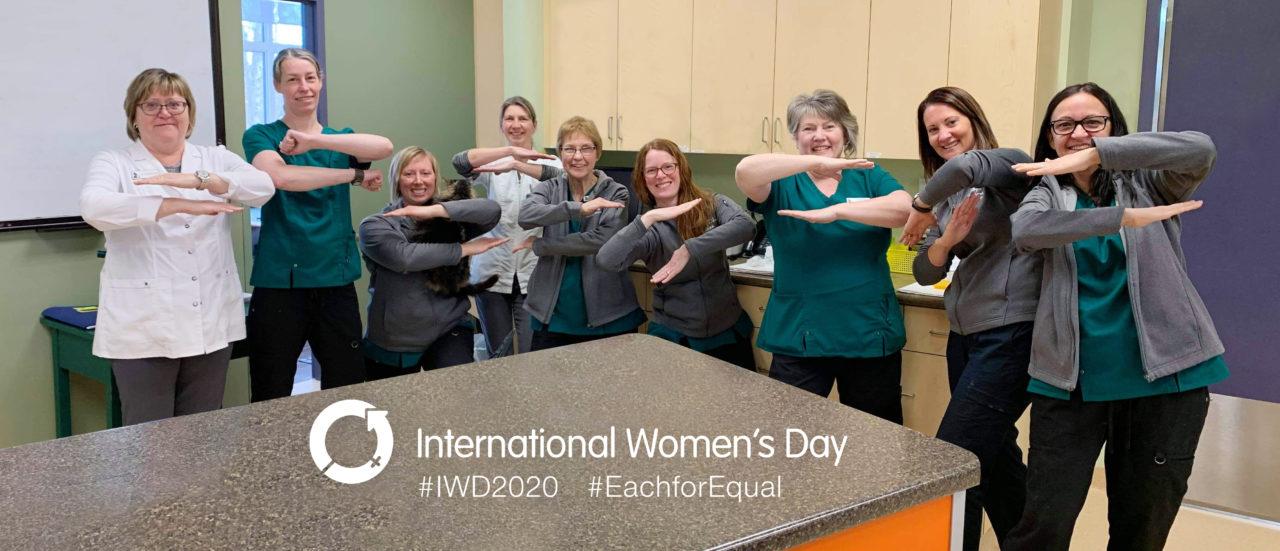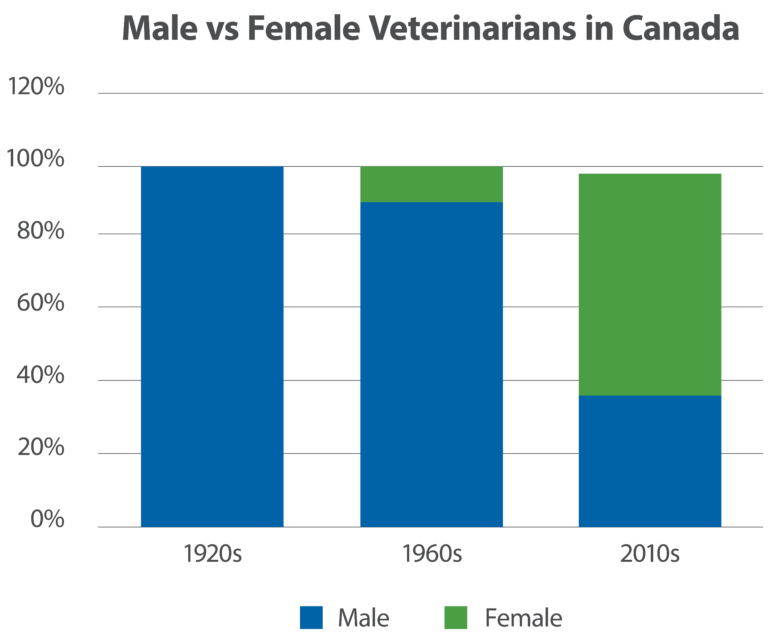A spotlight on women in the veterinary industry
March 3, 2020

Veterinary medicine is one of the industries where women outnumber men. Today, there are almost 13,000 veterinarians in Canada and according to the most recent statistics released by the Canadian Veterinary Medical Association (CVMA), 63% of them are female while 35% are male. While men dominated the industry in the early part of the last century, the gender shift really took off in the second half of the 1900s.
As an example, during the 1960s, in the province of Québec, women made up 10% of students enrolled in veterinary schools. By the year 1975, female students represented almost half of the student body at the Université de Montréal. In the late 1980s, the majority of enrolled students in Canada’s veterinary schools were women. Official demographics about veterinary technicians and other support team members are not yet available, but you only have to walk into one of our hospitals or practice managers’ meetings to see that the majority of our teams are made up of amazing women.

Pioneers and game changers
Since women first entered the veterinary profession in the early 1900s, they’ve spearheaded novel practices, studies, and organizations that forever changed the face of the industry. In 1939, Dr. Jean Rumney became the first Canadian woman to graduate from the Ontario Veterinary College. Dr. Rumney helped establish the first animal hospital for both small and large animals. In 1968, Dr. Meg Smart became the first female graduate from the University of Guelph’s Ontario Veterinary College (OVC). Her research on animal nutrition permanently revamped several protocols in large animal practice. She also wrote many research articles and books on raising and caring for sheep and goats. In 1986, Dr. Susan McNabb was elected as the first female president of the Ontario Veterinary Association. And in 1987, Dr. Elizabeth McGregor of Guelph, Ontario was chosen as the first president of the World Women’s Veterinary Association.
Women at VetStrategy
For the most part—especially in more recent years—women in the veterinary industry haven’t been disadvantaged by their gender. At VetStrategy, we prioritize equality in all areas and levels – among our hospital teams, in the field, and at our head office. In fact, about 60% of our Operations Directors across the country are female and half of our Executive Leadership team is made up of women. As a whole, our head office is approximately 60% female (including our female furry office pets). In our hospitals and clinics across Canada, women make up approximately 70% of our veterinarians and 95% of our support staff. It’s clear that the women in our network are thriving in their roles. What’s more, the quality of care that is given to our patients and clients attest to their success on a daily basis.

Empowering women in our network
To ensure that our teammates—both male and female—have strong support systems for their careers and personal lives, we provide a comprehensive EAP (Employee Assistance Program) that is available to all doctors, veterinary technicians, support staff, and head office team members. The program also offers a variety of blogs, videos, and forums that cover a range of topics (e.g. mental health, financial planning, career advice). Team members can even make in-person and video appointments with counsellors and health professionals.
At VetStrategy, we also provide our fellow team members with customizable work arrangements and continuing education modules. We offer flexible start times, work-from-home opportunities, virtual training seminars, as well as full-time and part-time positions. Veterinary staff can also choose shifts at the 24-hour hospitals in our network.
All of these resources, together with our commitment to being a place of work that our teammates can take pride in, ensure that they continue to make strides in their roles—whatever gender they may be. We look forward to building on these established systems to continue to strengthen and support the women in our teams and communities, along with the men who help champion them.
The numbers speak for themselves. In just a few decades, female representation in the Canadian veterinary field went from zero percent in the 1920s to 63% in 2019. At VetStrategy, we are here to support these advancements within our teams and the communities that they are a part of.
#EachforEqual #IWD2020
___________
Cover photo courtesy of the veterinary team at Oakbank Bird’s Hill Animal Hospital in Oakbank, Manitoba.
** Source: CVMA. Two percent had an undisclosed or unknown gender identity.
References:
1. CVMA
– Official Statistics
– One Voice: A History of the Canadian Veterinary Medical Association
2. Gender and veterinary medicine (Can Vet J. 2003 Jul; 44(7): 533–535.)
3. The History of Women in Veterinary Medicine in the U.S.
4. Smart blazed trail for female veterinarians